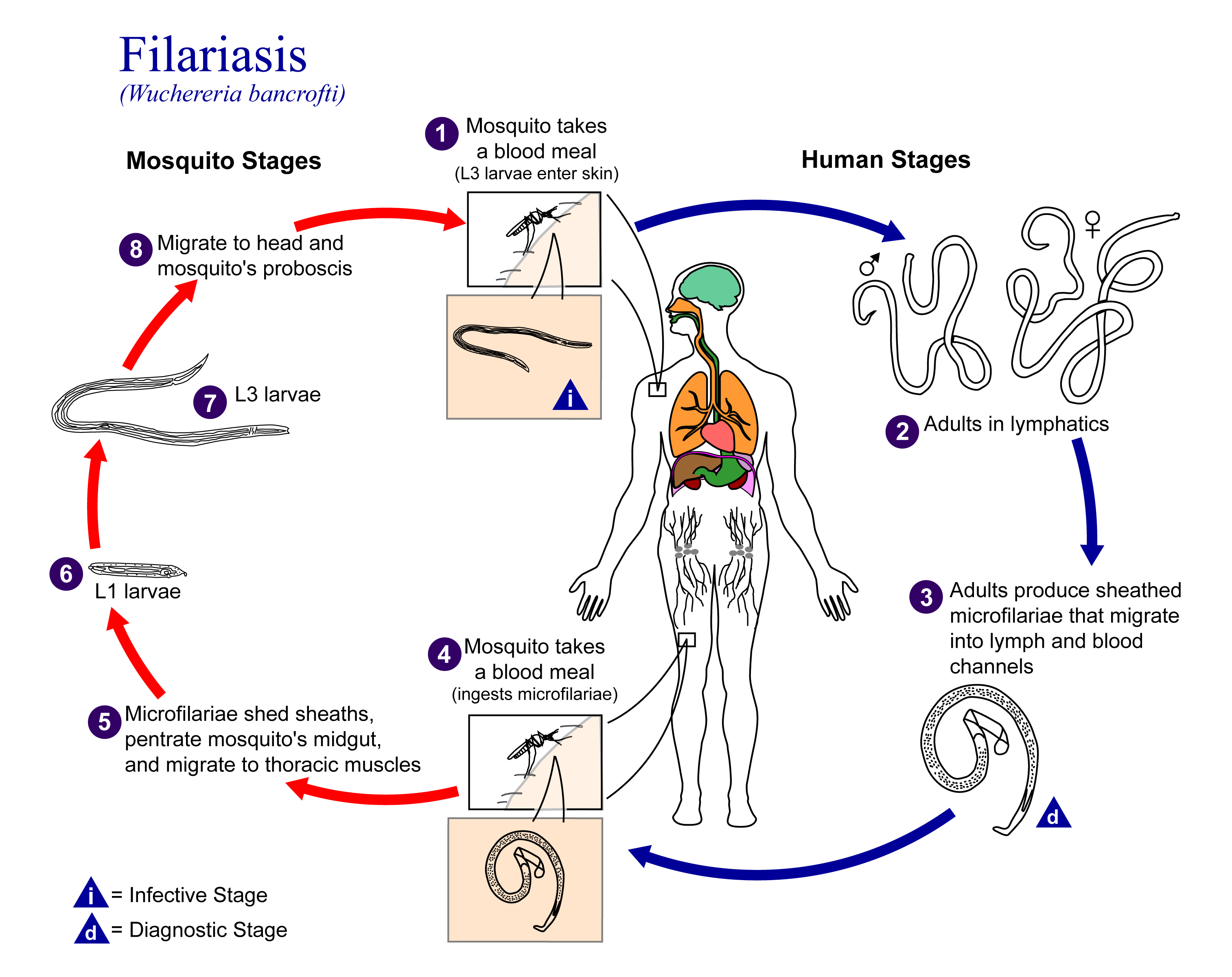Zoology Notes On – Filariasis – For W.B.C.S. Examination.
Filariasis or elephantiasis is the disease caused by Wuchereria bancrofti in humans. These filarial worms reside in the lymphatic vessels of the man and obstruct the flow of the lymph there by causing severe condition known as elephantiasis in which the limbs and other body parts grow into enormous size.Continue Reading Zoology Notes On – Filariasis – For W.B.C.S. Examination.
Pathogenesis: Light infection causes filarial fever, mental depression and headache. The infection of the parasite causes inflammatory effects. The inflammation in the lymph vessels is called as lymphangitis and the inflammation in the lymph glands is called lymphadenitis.
Heavy infection is caused when the microfilaria density is more than 20,000 per ml of blood. In this case the accumulation of the dead worms and the inflammatory reactions of the worms block the lymph vessels and glands resulting in immense swelling in the extremities of the limbs, scrotum of males and mammary glands of females. The condition of the swelling of the extremities is called as lymphedema.
The increased permeability of the wall in the lymph vessels leads to accumulation of lymph in the tissue. The fibroblasts accumulate in the oedematous tissues causing fibrosis. Thus fibrous tissue is formed in these regions.
In severe cases, the sweat glands in the affected regions disintegrate causing the skin to become dry and rough. Other manifestations of this disease include,
- lymphangiovarix– dilation of lymph vessels in inguinal, scrotal and abdominal regions
- Lymphorrhage– rupture of lymph vessels
- Hydrocele– accumulation of fluid due to the obstruction of spermatic cord
- Occult filariasis– hypersensitivity reaction to filarial antigens
Diagnosis: The diagnosis includes the study of microfilariae after staining. Microfilariae of different species are identified based on their specific shape and morphological characters.
Therapy and control: Complete satisfactory treatment is not yet known though the disease can be reduced or eliminated by eradication of microfilariae from the circulation by administration of heterazan and compounds of antimony and arsenic.
Prevention: Filariasis can be controlled by the following methods,
- Protection against adult mosquitoes– The adult mosquitoes can be controlled by spraying the insecticides like organochlorides like DDT and BHC in the homes. Fumigation of the dwelling places is also effective measure to kill the mosquitoes. Using mosquito nets is the safest method to avoid the mosquito bite.
- Destruction of mosquito larvae– Spraying of kerosene pyrethrum oil on the sewage gutters and ditches is recommended to kill the mosquito larvae. Insecticides are used in the breeding places to kill the larvae. Biological control using larvivorous fishes like Gambusia is much safer.
Please subscribe here to get all future updates on this post/page/category/website


 +919674493673
+919674493673  mailus@wbcsmadeeasy.in
mailus@wbcsmadeeasy.in







































































































